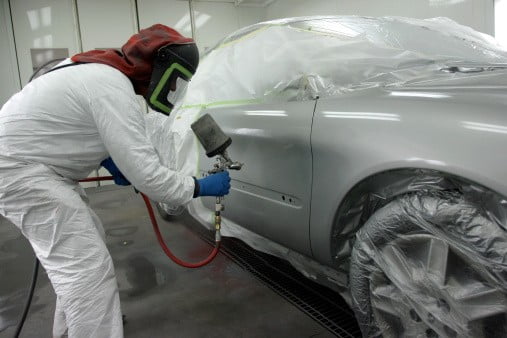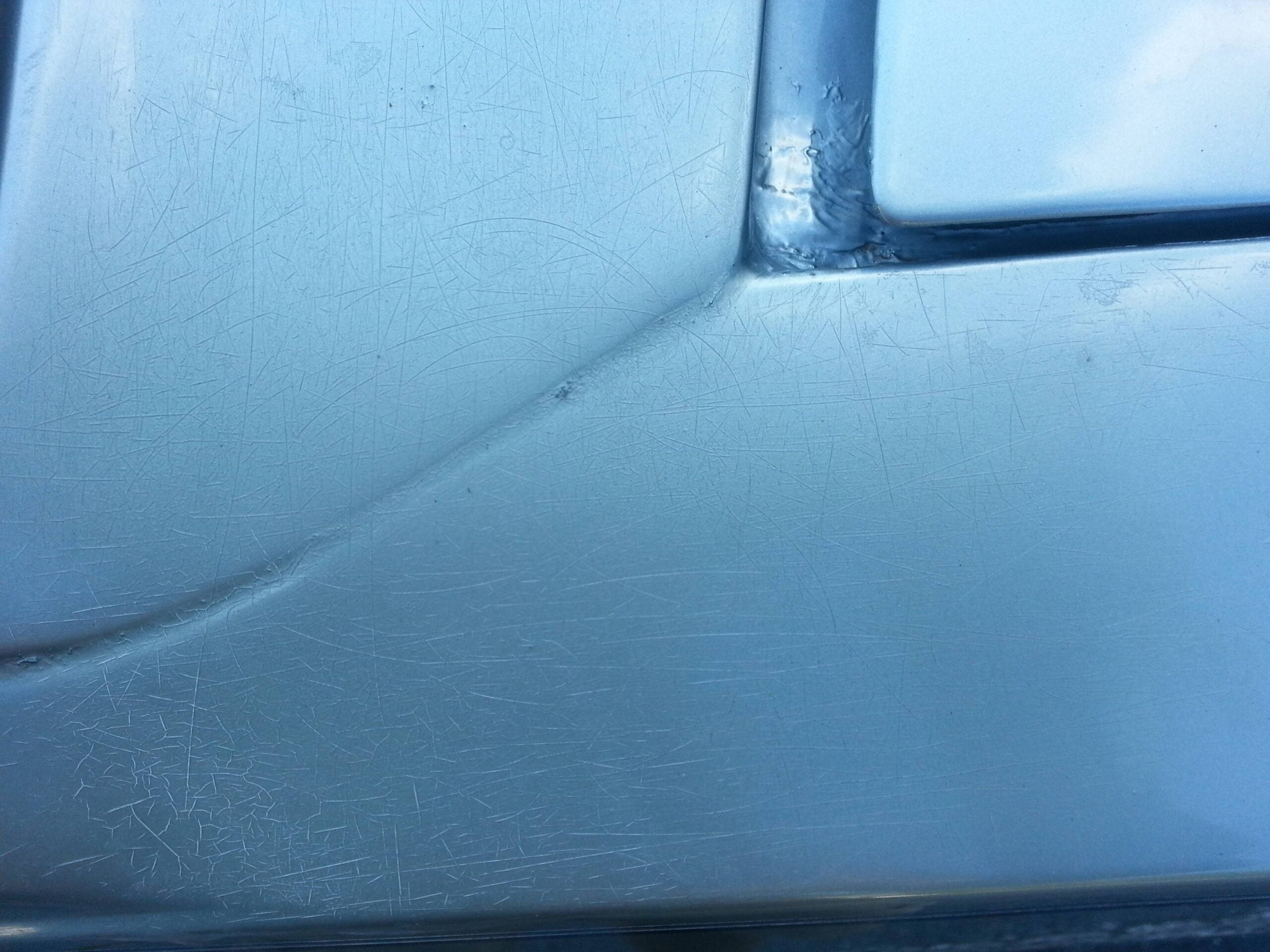Last updated on December 27th, 2023 at 10:53 am
Stress cracks in car paint can be a frustrating and unsightly issue for car owners. These cracks, which appear as thin, elongated lines on the surface of the paint. Stress cracks can be difficult to repair, but there are several solutions available for addressing this issue. In this article, we will explore the causes of stress cracks in car paint and discuss some potential solutions for fixing and preventing them.
Causes why stress cracks in car paint
Stress cracks, also known as crazing, are small cracks or fissures that can appear on the surface of a car’s paint job. They typically resemble a spiderweb or a network of fine lines, and can be found in various locations on a vehicle, including the hood, roof, trunk, and doors.
There are several factors that can contribute to the development of stress cracks in car paint. One of the most common causes are:
Extreme temperature fluctuations
One of the most common causes of stress cracks in car paint is extreme temperature fluctuations. When the paint on a car is exposed to extreme temperature fluctuations, such as hot and cold cycles, it can cause the paint to expand and contract, leading to the formation of stress cracks. These cracks can occur when the car is parked in direct sunlight or when it is exposed to extreme cold temperatures.
Age
As your car gets older, the paint might start cracking more easily. Imagine it’s like our skin – as we age, it changes, right? The same happens with a car’s paint. If the car isn’t taken care of well and isn’t shielded from things like sun, rain, and all the weather stuff, the paint can get weaker.
It’s like when we forget to put on sunscreen and get sunburnt; the paint can’t handle the harsh stuff either. So, as time goes on, if the car isn’t looked after and protected, its paint can start cracking because it’s been through a lot and needs some extra care.
Mechanical stress
Stress cracks in car paint don’t always show up on their own. Sometimes, it’s all about the pressure – literally!
Imagine your car getting bumped in an accident. That force can actually make the paint crack, creating those lines you definitely don’t want to see. Even during the painting process itself, if someone goes a bit too heavy-handed with the pressure, it can end up causing these stress cracks.
It’s like pushing too hard while drawing on a piece of paper – the surface can’t handle it and ends up with those unwanted lines.
So, whether it’s a big collision or just too much pressure during a paint job, these mechanical stresses can leave your car’s paint job looking less than perfect.
Impact
When something hits your car hard, like a rock or a bump, it can mess up the paint. This impact can create tiny cracks or chips in the paint job.
You know those small lines you might see? That’s the paint saying, “Ouch!” These cracks happen when something really strong smacks into your car, making the paint break.
Whether it’s a little stone or a bigger collision, the power from that hit can make those stress cracks show up, making your car’s paint look less smooth and nice.
Poor paint application
Stress cracks can also be caused by poor paint application. If the paint is not applied evenly or if the paint is not allowed to dry properly, it can lead to the formation of stress cracks.
Contamination:
Contamination, such as dirt or debris, can also cause stress cracks in car paint. If the paint is not thoroughly cleaned before it is applied, the contaminants can become trapped under the paint, leading to the formation
In addition to being unsightly, stress cracks in car paint can also weaken the overall integrity of the paint job and may lead to more serious damage if left untreated. For example, if water gets into the cracks and begins to rust the metal beneath the paint, it can cause further damage to the car. So if you do notice stress cracks in your car’s paint, it is important to address the issue as soon as possible.
How To Repair Car Paint Cracks
Painting the entire car

If the cracked paint on your car is extensive or the damage is too severe to be repaired with touch-up paint, you may need to repaint the entire car. Here are the steps you can follow to repaint your car:
- Clean the car thoroughly, including the areas with cracked paint, to remove dirt, grime, and debris.
- Sand the entire car with fine-grit sandpaper to rough up the surface and create a good bond for the new paint. Be sure to sand around the edges of the cracked paint to blend it in with the rest of the car.
- Mask off any areas that you don’t want to paint, such as the windows, headlights, and trim.
- Use a deglosser or a chemical paint stripper to remove the existing paint and clear coat. Follow the manufacturer’s instructions for application and safety precautions.
- Once the paint and clear coat have been removed, use a putty knife or a scraper to remove any remaining paint and smooth out any unevenness.
- Clean the car again to remove any dust or debris left behind from sanding and stripping.
- Apply a coat of primer to the car to provide a good base for the new paint to adhere to. Let the primer dry.
- Once the primer is dry, apply the new paint in thin, even coats, using a paint gun or a paint roller. Make sure to follow the manufacturer’s application and drying time.
- After the paint has dried, apply a clear coat to protect the new paint and give it a glossy finish. Let the clear coat dry.
Repainting a car can be a time-consuming and labor-intensive process, so it’s best to have a professional handle it if you’re not confident in your ability to do it yourself.
Paint Over Cracks That Have Already Formed
If the cracks in the paint on your car are small and not too deep, you may be able to repair them by simply painting over them. Here’s how you can do it:
- Clean the area around the cracks with soap and water, and then dry it thoroughly.
- Sand the area around the cracks with fine-grit sandpaper to rough up the surface and create a good bond for the repair.
- Use a small brush or a toothpick to apply a small amount of touch-up paint to the cracks. Make sure to use thin, even strokes to avoid drips and runs.
- Let the paint dry. Once the paint is dry, sand the area lightly with fine-grit sandpaper to smooth out any unevenness.
- Apply a clear coat over the repaired area to protect the paint and blend it in with the surrounding surface. Let the clear coat dry according to the manufacturer’s instructions.
Keep in mind that painting over cracks may not completely hide them, and the repair may not be as durable as if you had repaired the cracks more thoroughly. If the cracks are deep or extensive, it may be best to follow the steps for repainting the entire car or the affected areas to achieve a more permanent repair.
Making Use of a Paint Pen
To use a paint pen to repair cracks in the paint on your car, follow these steps:
- Clean the area around the cracks with soap and water, and then dry it thoroughly.
- Sand the area around the cracks with fine-grit sandpaper to rough up the surface and create a good bond for the repair.
- Use the paint pen to fill in the cracks with thin, even strokes. Let the paint dry.
- Once the paint is dry, sand the area lightly with fine-grit sandpaper to smooth out any unevenness.
- Apply a clear coat over the repaired area to protect the paint and blend it in with the surrounding surface. Let the clear coat dry again
Tips to prevent Stress Cracks In Car Paint in future
Here are some tips to help prevent stress cracks in car paint in the future:
Keep the car’s paint clean: Regularly washing and waxing the car’s paint can help protect it from dirt, grime, and other contaminants that can cause stress cracks.
Avoid exposing the car to extreme temperatures: Exposure to extreme temperatures, such as hot and cold cycles, can cause the paint to expand and contract, leading to stress cracks. To help prevent this, try to store the car in a garage or covered area and avoid leaving it in direct sunlight for extended periods of time.
Protect the car’s paint from impact: Impact, such as a stone chip or a collision, can cause stress cracks in car paint. To help prevent this, try to avoid driving over rough roads and be mindful of flying debris when driving on the highway.
Use a paint sealant: A paint sealant is a protective coating that is applied over the car’s paint to help protect it from the elements and reduce the risk of stress cracks.
Repair chips and scratches promptly: If the paint on your car becomes chipped or scratched, it is important to repair it promptly to prevent further damage. You can use a touch-up pen or paint to fill in the chips and scratches, or you can have the affected area sanded and repainted by a professional.
By following these tips, you can help prevent stress cracks in car paint and keep your car’s paint looking its best.
Is it worth it to repair stress cracks in car paint?
Whether or not it is worth it to repair stress cracks in car paint will depend on the severity of the cracks and the overall condition of the car. If the cracks are minor and do not affect the car’s performance, it may not be worth it to repair them. However, if the cracks are severe or if the car’s paint is in poor condition overall, it may be worth it to have the cracks repaired to improve the cosmetic appearance and value of the car.
CONCLUSION
Overall, stress cracks in car paint are a common problem that can be frustrating and unsightly. By understanding the these causes of cracks and taking steps to repair and prevent them, you can protect the cosmetic appearance and value of your vehicle.
FOLLOW US
